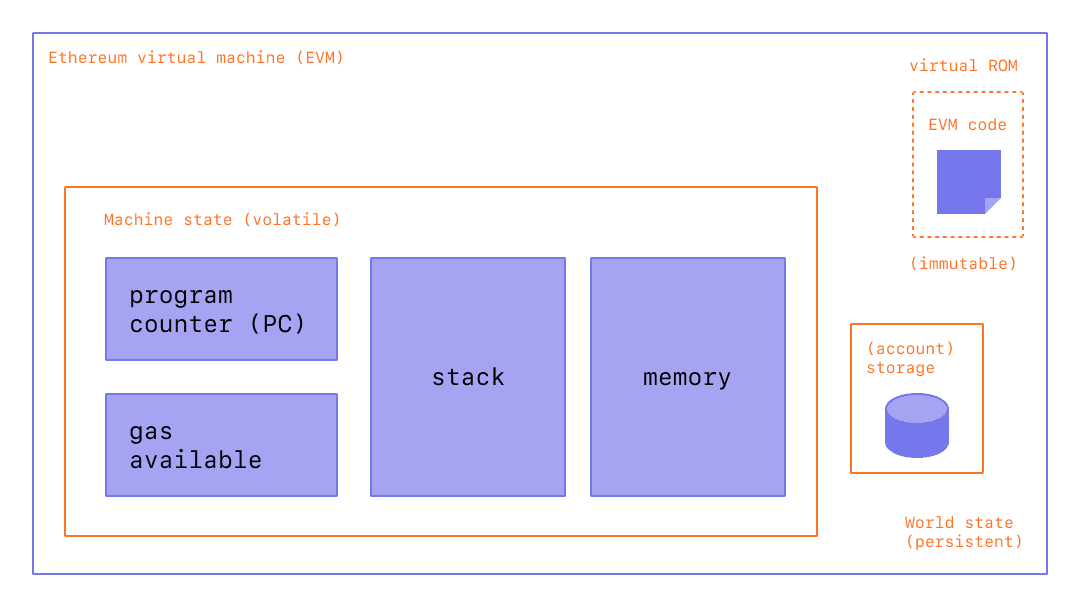-
Notifications
You must be signed in to change notification settings - Fork 62
Description
The biggest source of Ethereum on the chain and the success of smart contracts, we see that the key to the success of the Ethereum ecosystem is the creation of an EVM virtual machine. At present, the realization of a virtual machine is very important for XDAG. The reasons are as follows:
- The throughput of Ethereum L1 15 tps/s causes high handling fees (>10$), which greatly limits the development of DAPP
- Ethereum 2.0 POS has not yet determined the specific launch date, which has a great degree of delay risk and security risk (the topic of POW vs POS is a cliché, not to argue here, but we believe that POW is more secure)
- XDAG has a natural high TPS design, and POW safety design, and has a good foundation for the development of higher performance DAPP
EVM Illustrated
EVM INSTRUCTIONS
The EVM executes as a stack machine with a depth of 1024 items. Each item is a 256-bit word, which was chosen for the ease of use with 256-bit cryptography (such as Keccak-256 hashes or secp256k1 signatures).
During execution, the EVM maintains a transient memory (as a word-addressed byte array), which does not persist between transactions.
Contracts, however, do contain a Merkle Patricia storage trie (as a word-addressable word array), associated with the account in question and part of the global state.
Compiled smart contract bytecode executes as a number of EVM opcodes, which perform standard stack operations like XOR, AND, ADD, SUB, etc. The EVM also implements a number of blockchain-specific stack operations, such as ADDRESS, BALANCE, KECCAK256, BLOCKHASH, etc.

